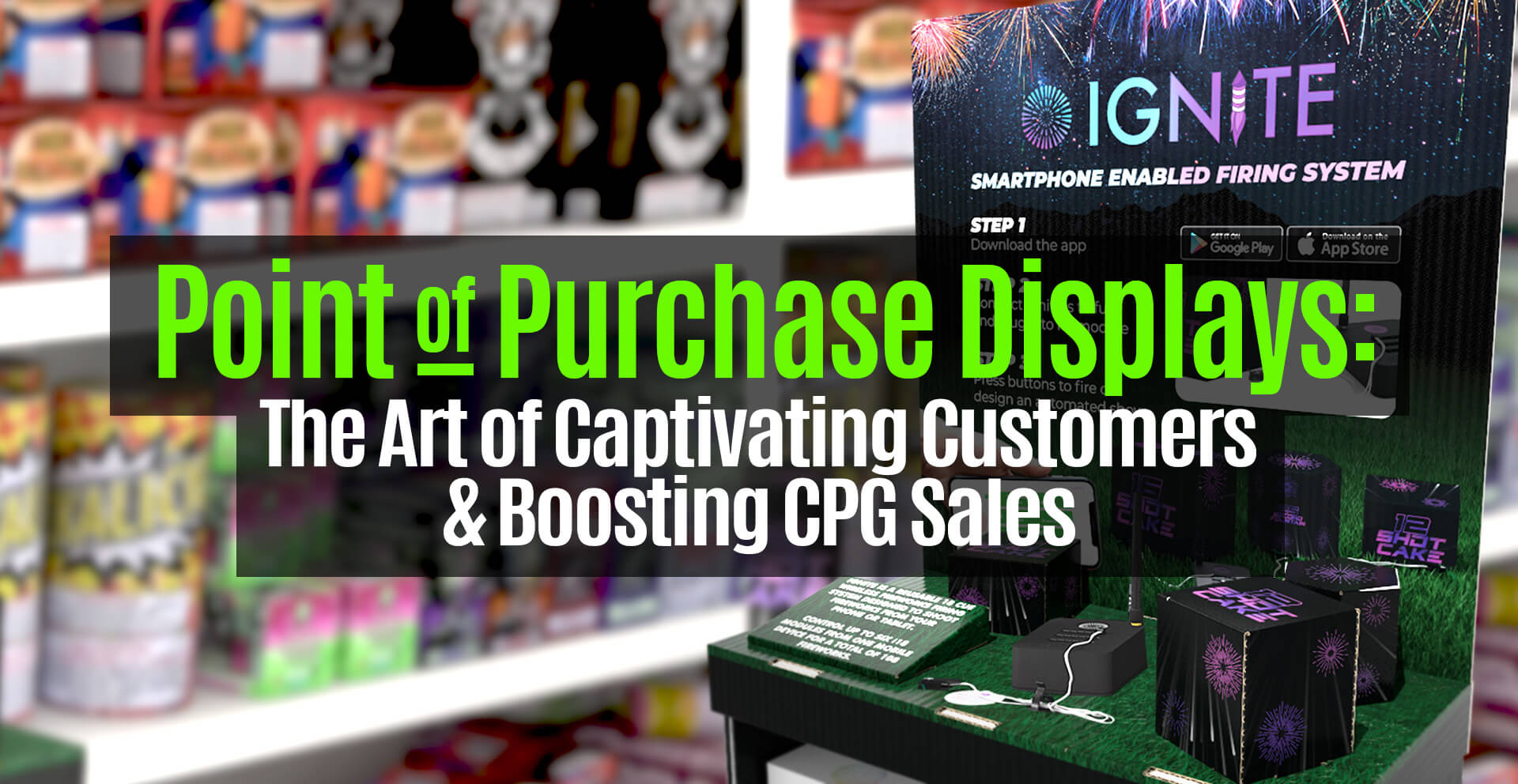
In the competitive world of consumer product goods (CPG), establishing a solid brand identity and captivating customers' attention via packaging and new product displays is essential for success.
Amidst evolving retail landscapes, where in-store and online channels play significant and often supporting roles, cohesive branding support is crucial.
This expertise helps CPG companies stand out from the crowd and promote seamless customer experiences across various touchpoints.
Below, we look at the crucial role of point-of-purchase displays in creating a solid brand identity, driving sales, and enhancing the overall customer experience.
What Makes a Good Point of Purchase Display?
A point-of-purchase display is an in-store device to stock and showcase consumer product goods such as food, electronics, accessories, and other items.
It is strategically placed where consumers frequently walk by or make their purchase decisions.
They're designed to attract attention and gain consumer interaction while establishing or reinforcing your brand's identity and messages.
Characteristics of effective point-of-purchase displays include:
Visual Impact: Effective in-store product displays should have a strong visual impact that instantly grabs consumers' attention.
Bold colors, eye-catching graphics, and attractive imagery help draw people toward the display amidst a crowded retail environment. The design should be easy for customers to interact with, cohesive with your brand's overall aesthetic, and aligned with the promoted product.
Clear Messaging: The messaging on a point-of-purchase display should be concise, clear, and easily understood. It should communicate the key benefits, unique selling points, or promotional offers associated with the product.
Using catchy slogans, taglines, or call-to-action statements helps reinforce the message and encourage consumer engagement.
Product Placement: The display should showcase the featured products prominently and make them easily accessible to shoppers.
Strategic product placement, with consideration given to product size, orientation, and arrangement, enhances visibility and encourages interaction.
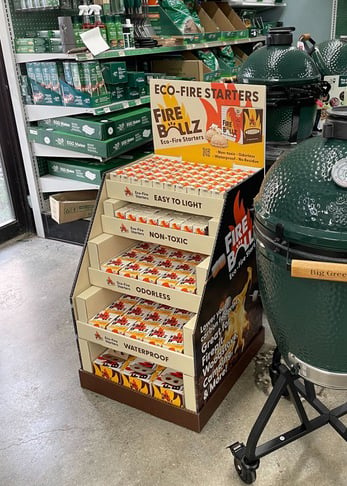
Ensuring that the product is readily available for sampling or demonstration, if applicable, further enhances the consumer's experience and increases the likelihood of a purchase.
Creative Design and Structure: Innovative and exciting design elements help differentiate a point-of-purchase display from competitors and create a memorable brand experience. Unique shapes, 3D structures, or interactive features like motion-triggered audio and lighting capture attention and engage consumers.
However, it is vital to balance creativity and practicality, ensuring that the display is sturdy, safe, easy for staff to assemble, and doesn't occupy excessive space.
Brand Consistency: The display should align with the product's look and feel, using consistent colors, fonts, logos, and other prominent features of your brand's identity. This helps reinforce recognition and association in the eyes of customers.
Targeted Appeal: Effective POP displays take into consideration the target audience's preferences, interests, and behaviors.
Understanding the demographics and psychographics of intended consumers guide design decisions, ensuring that the display resonates with their tastes and preferences.
Adaptability: POP displays should be designed to fit various retail environments, whether a small convenience store, a large supermarket, or a trade show booth. Flexibility in size, configuration, and adaptability to different display areas within a store or event space maximize the display's reach and potential impact.
What is the Most Effective Point of Purchase Display?
Some examples of point-of-purchase displays effective in driving sales include:
Standalone Floor Displays: Freestanding displays in high-traffic areas create substantial visual impacts with their size and height. They may feature multiple product tiers, shelves, or hooks to showcase products.
Standalone floor displays are particularly effective for promoting new or featured products, seasonal items, or impulse purchase items.
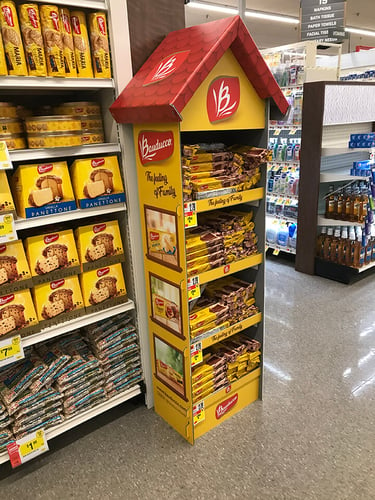
Endcap Displays: These point-of-purchase displays are positioned at the end of store aisles, where they get increased visibility from passersby. They are ideal for highlighting specific products, promotions, or new releases.
Endcap displays often have large graphics, signage, or interactive elements, drawing attention and encouraging shoppers to explore the showcased products.
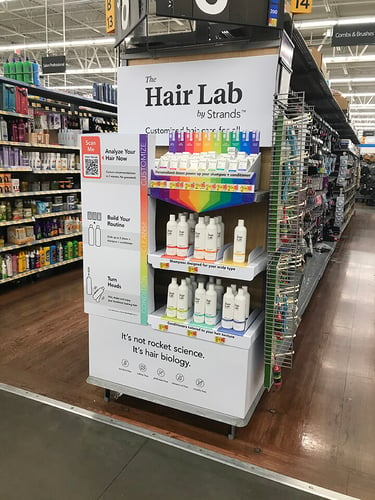
Counter Displays: Placed near checkout counters or customer service desks, counter displays target customers during the final stages of in-store activity. These compact point-of-purchase display examples grab attention and encourage last-minute purchases or upselling opportunities.
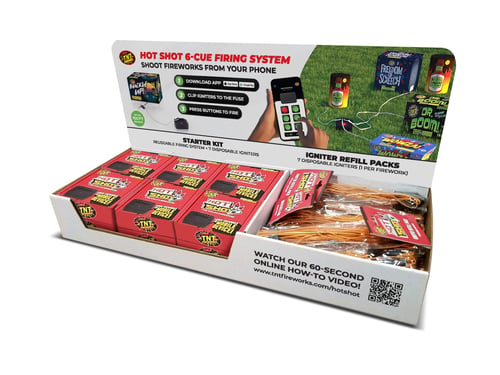
They are commonly used for small, high-margin items like snacks, canned goods, accessories such as keychains, flashlights, socks, hats, tobacco products, or other similar impulse buys.
Interactive Displays: Interactive POP displays engage and captivate customers through gamification, touchscreens, augmented reality (AR), or virtual reality (VR) experiences.
These point-of-purchase display ideas, perhaps using tablet devices or short video presentations, provide an interactive and immersive brand encounter.
They create an educational and engaging shopping experience that stands out from the norm, leading to increased brand support and sales.
Product Demo Displays: These displays are designed to let customers interact with and experience the product firsthand.
Whether through live demonstrations, product samples, or interactive product showcases, these displays help educate customers about the product's features, benefits, and usage, increasing their likelihood of purchasing.
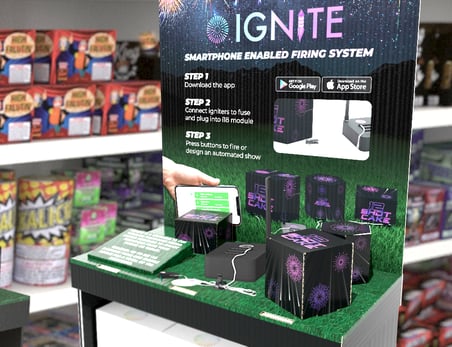
Digital Signage: Point-of-purchase display ideas may leverage vibrant LED screens or video walls to showcase content, including new product demos, software or website demos, model comparisons, or customer testimonials.
These examples of point-of-purchase displays offer flexibility in content rotation, enabling CPG companies to promote multiple products, and offer seasonal promotions or messages within a single structure.
Holiday Themes: Combine one or more options and tie them in with your favorite holiday promotions. Align your product displays with seasonal themes to capitalize on specific occasions and create a sense of relevance.
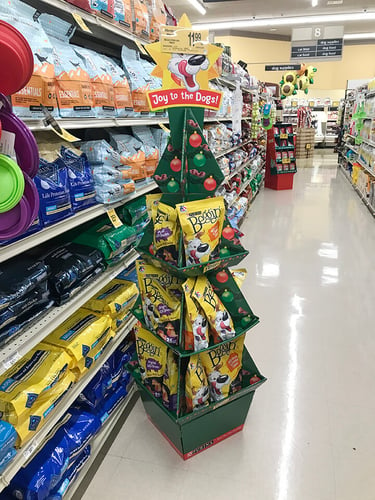
Tailor your presentations to reflect the colors, symbols, and sentiments associated with different seasons or holidays, such as Independence Day, Thanksgiving , Christmas, and New Year's Eve.
This approach attracts customers looking for deals or gift-specific products. It makes the shopping experience more convenient and saves your customers valuable time.
How Can I Improve My Product Display?
Use point-of-purchase display ideas that align with showcased products, and increase the likelihood of driving sales and building brand loyalty.
From material choice to typography, color palette, and structural design, every element is designed to evoke emotions, communicate brand stories, and differentiate your goods from competitors.
For example:
Clear & Engaging Messaging: Ensure your display clearly communicates the key benefits, unique selling points, or promotional offers associated with the product. Use concise and persuasive messaging, catchy slogans, or compelling visuals to capture attention and engage customers.
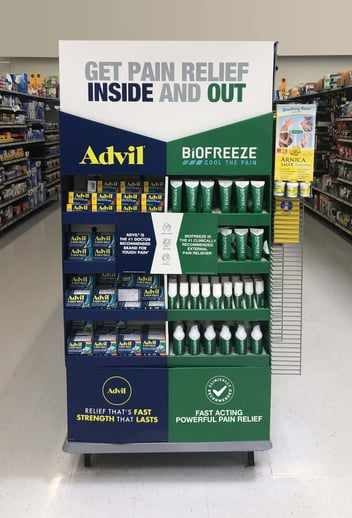
Props and Enhancements: Consider using props, complementary products, or visual enhancements reinforcing the product's use case. If you're promoting a kitchen appliance, showcase it alongside food ingredients or cooking utensils to create a complete picture of its functionality.
Lighting: Proper lighting enhances the visual impact of your product display. Consider using spotlighting, backlighting, or ambient lighting to highlight specific products, create a focal point, and add depth to the exhibit.
Experiment with different lighting techniques to create upscale, captivating examples of point-of-purchase displays.
Clean & Organized: Regularly clean and maintain your display to ensure it looks fresh, presentable, and professional.
Arrange products in an organized manner, ensuring they are neat, properly faced, and easy to browse.
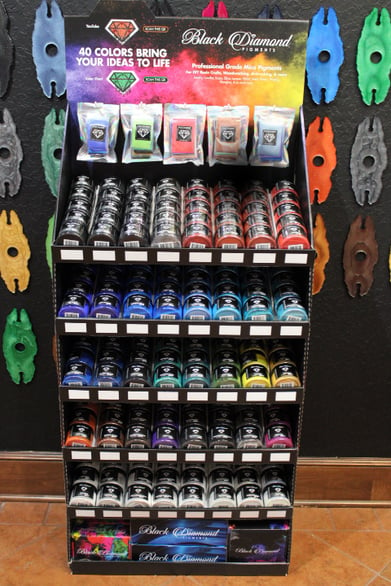
Offer relevant sales promotion booklets and product manuals for consumers to bring home and review later. Include branded business cards and your team’s contact information.
Test and Iterate: Experiment with different point-of-purchase display ideas, messaging variations, or design elements and identify what resonates best with your target audience. Conduct A/B testing or request customer feedback to analyze what drives the highest engagement and conversion rates.
How Will Your Display Attract Attention and Increase Sales?
The point-of-purchase display examples we've covered in this article all strive to help those CEOs and marketing executives who ask, "How can I improve my point-of-purchase results?"
Point-of-purchase displays offer an opportunity to capture attention while customers are in the buying mood, providing an immersive and engaging experience that can tip the scales in favor of a particular brand.
As our implementation of in-store and trade show display technology advances, it allows us to make your most complex branding support visions come to life using the best-in-class materials currently available.
Well-executed point-of-purchase display examples like endcaps, standalone, counter displays, and interactive displays all hold the power to attract attention and significantly boost sales.
By using one of our visually dominant and strategically placed displays, you'll capture the interest of potential customers and entice them to learn more and purchase immediately.
In addition, our product packaging lines strike the delicate balance between aesthetics, functionality, and brand messaging that lets your consumer goods leave a lasting impression on customers in-store and online.
Packaging design is no longer just about protecting a product during transit; it has become a powerful marketing tool. An optimal package catches the consumer's eye and conveys brand values, personality, and promises.
With our expertise in offering stunning visual presentations using the latest materials and construction best practices, our premium packaging plays a crucial role in shaping your brand’s image, driving sales, and fostering customer loyalty.
Contact our team at Catalpha today, and let us make your unique point-of-purchase display and packaging ideas come to life.

